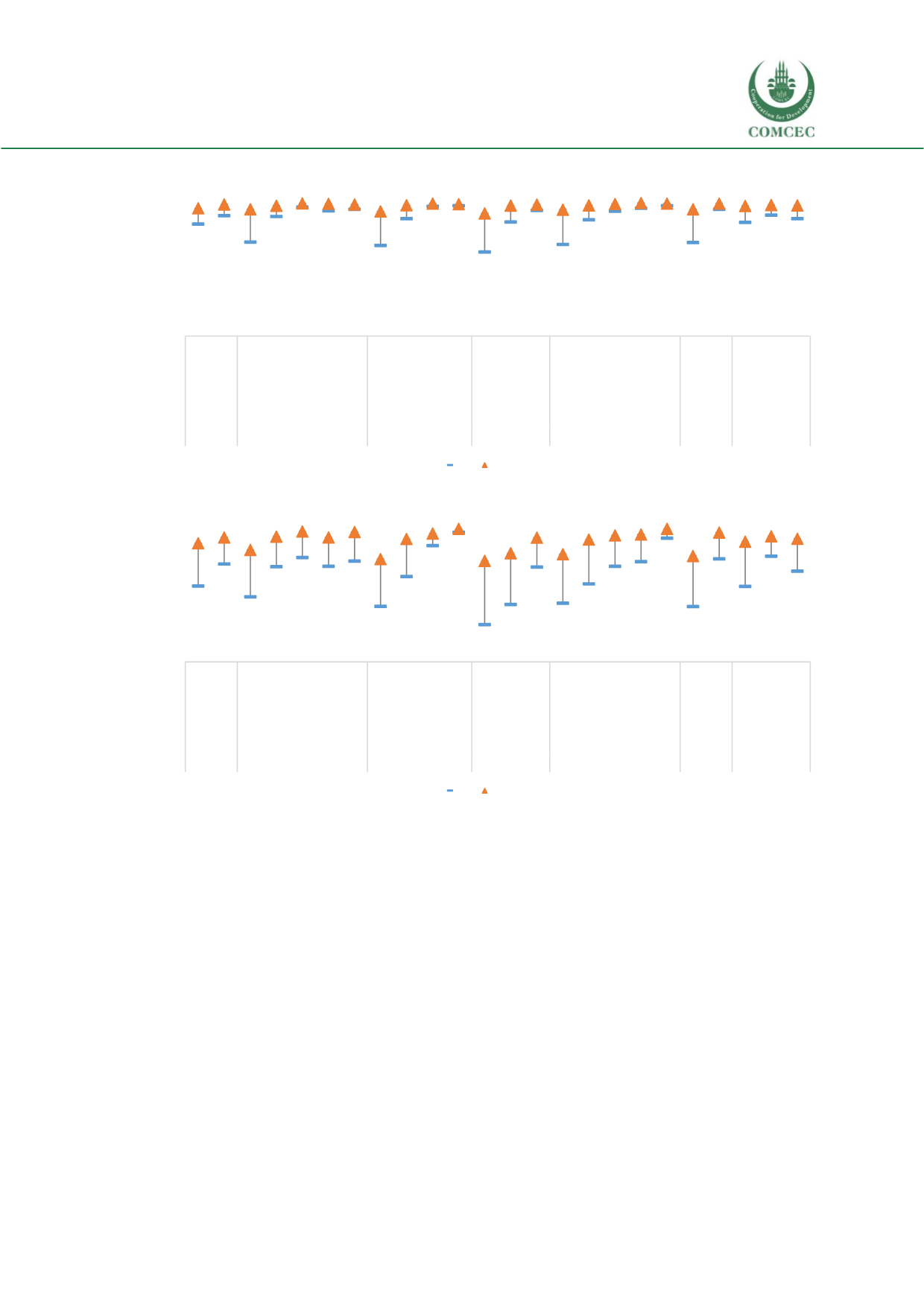

Education of Disadvantaged Children in OIC:
The Key to Escape from Poverty
233
C.
Finishing 5 years of education (12-15 year olds)
D.
Finishing 8 years of education (16-18 year olds)
Note: Authors’ calculations using DHS 2003 and 2013.
Probit regression methodology and results
Probit regressions
The second analysis used in the report is the probit regression method. The effect of
circumstances on school attendance and finishing school for children is measured using probit
regression making use of the most recent DHS dataset and another DHS dataset from 10 years
ago or more for each country. These regressions show the degree of the effect of circumstances
and which circumstances continue to matter. The probit equation that was used is as follows:
( ) = (
′
)
The circumstance variables X that are used in the probit regression is the same as the variables
that are used in HOI. These are location of the household, region of the household,
0
10
20
30
40
50
60
70
80
90
100
Rural
Urban
East
South
Central
West
North
No education
Primary education
Secondary Education
Higher Education
5 or more children
3-4 children
1-2 children
Quint 1 (Poorest)
Quint 2
Quint 3
Quint 4
Quint 5 (Richest)
Non-Turkish
Turkish
Female
Male
TOTAL
finishing 5 years of education (% of 12-15 year olds)
2003 2013
0
10
20
30
40
50
60
70
80
90
100
Rural
Urban
East
South
Central
West
North
No education
Primary education
Secondary Education
Higher Education
5 or more children
3-4 children
1-2 children
Quint 1 (Poorest)
Quint 2
Quint 3
Quint 4
Quint 5 (Richest)
Non-Turkish
Turkish
Female
Male
TOTAL
finishing 8 years of education (% of 16-18 year olds)
2003 2013
















